|
-
 Tire Pressure Tire Pressure
Why my new F3L recommended tire pressure is 15 +-2? When I had my RTS the recommended tire pressure was higher. Why??
2016 Spyder F3 Limited, black, Special Edition, SE6, belt tensioner, Bajaron swaybar, AKARAPOVIC, F4 windshield with vent. Previous 2015 RTS in black and 2011 RT Limited, SE5 with Bajaron Swaybar and Bumpskid
-

Possibly because the RT weighs more. For a given (desired) contact patch area, additional psi will support more weight. Tire pressure works in conjunction with other suspension parameters such as shock settings, spring rates, etc.
2015 F3 (wife's)
2014 Indian Vintage
2019 AMG C43 cabrio
1966 LS1 Corvette restomod
1956 Corvette survivor (wife's)
1941 Chevy hotrod truck
2023 Corvette Z06
-
Ozzie Ozzie Ozzie
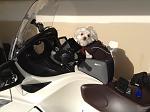

^ Wot 'e says! But you also need to remember that the more pressure of air inside a given tire, the less the area of contact from that contact patch so the less grip you get once you pass the optimum pressure! Taking it a bit further, one of the main functions of a tire is 'to contain the air that supports the weight of the vehicle', which in this case is an F3, a somewhat lighter Spyder than the RT which means a lighter load on each of the front tires (& the rear too, for that matter!) 
The unpressurised volume of air inside the tire hasn't changed between the 2 different Spyders (has it?? You are still running the same tire size aren't you??) so the required pressurised volume of air inside the F3 tire to achieve the optimum contact patch size is somewhat less than that required by the heavier RT, & that means you simply need to fill it with air at less pressure or you compromise the traction available from that tire, just like when (or if) you swap from the Kenda OE tire to a more heavily constructed car tire where the tire casing itself will do more of the 'holding up the weight' task, you should also drop your pressure from that needed in the lightly (extremely lightly, in fact, more likely 'crap' than just light!!) constructed Kenda's!! 
Last edited by Peter Aawen; 09-10-2016 at 05:31 PM.
-
Very Active Member
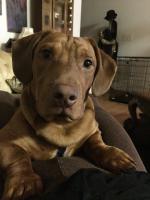
 There you go.... There you go....
Great explanations on the reasons for the pressure change. Now you will still have to adjust it to suit your style of ryding. Always fun figuring this one out and not much help from us cause we all have different pressures.... 
Gene and Ilana De Laney
Mt. Helix, California
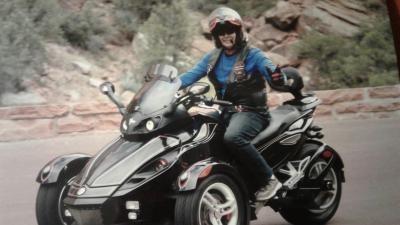 2012 RS sm5
2012 RS sm5
2012 RS sm5 , 998cc V-Twin 106hp DIY brake and park brake Classic Black
-
Active Member

 Cold + 10% Cold + 10%
I have always used the cold + 10% on my bikes and have never had an issue.
Start with the recommended pressure in a cold tire. Load the bike with the weight you normally ride with, then ride until the tires are warm at the speed and type of roads you typically ride. Then check the pressure: it should not be more than the cold temp + 10%. e.g. start at 20 then when warm should be around 22, if 28 then 30.8. If it is too high, then lower the starting pressure a bit and check again. If it too low, increase the starting pressure. It takes a while, but when you are done, it will serve you and the tires well.
Interestingly enough, after you get this done, it seems to vary very little from hot days to cold days. The tires warm up due to friction, and the cold +10% still works! I have had to do some minor adjustments for both weather extremes, but most of the time I just check the cold pressure and go. (If you have the FOBO system, doing the check at both ends is a piece of cake!)
-
Very Active Member
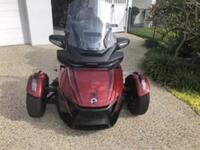
 Thanks Bike-O-Din Thanks Bike-O-Din
I have often wondered if I need to run higher tyre pressures to suit my 300lb frame (currently 18 and 28)........this is as good a start point as any.....thanks Bike-O-Din.
Pete
Harrington, Australia
2021 RT Limited
Setup for Tall & Big.... 200cm/6'7", 140kg/300lbs, 37"inleg.
HeliBars Handlebars
Brake rubber removed to lower pedal for easier long leg/Size 15 EEEEW boot access.
Ikon (Aussie) shocks all round.
Russell Daylong seat 2” taller than stock (in Sunbrella for Aussie heat & water resistance)
Goodyear Duragrip 165/60 fronts (18psi) - provides extra 1/2” ground clearance.
Kenda Kanine rear.
2021 RT Limited , Brake pedal rubber removed for ease of accessing pedal with size 15 boots. Red
-
Active Member
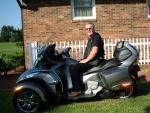

I think I read on here a short time ago from Blue Knight. That with car tires on a rts you could do 17 front and 20 rear, so I am trying that.
-
Active Member
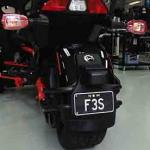
 Nitrogen Nitrogen
 Originally Posted by Bike-O-Din

I have always used the cold + 10% on my bikes and have never had an issue.
Start with the recommended pressure in a cold tire. Load the bike with the weight you normally ride with, then ride until the tires are warm at the speed and type of roads you typically ride. Then check the pressure: it should not be more than the cold temp + 10%. e.g. start at 20 then when warm should be around 22, if 28 then 30.8. If it is too high, then lower the starting pressure a bit and check again. If it too low, increase the starting pressure. It takes a while, but when you are done, it will serve you and the tires well.
Interestingly enough, after you get this done, it seems to vary very little from hot days to cold days. The tires warm up due to friction, and the cold +10% still works! I have had to do some minor adjustments for both weather extremes, but most of the time I just check the cold pressure and go. (If you have the FOBO system, doing the check at both ends is a piece of cake!)
Agree
I believe This is about the best and easiest method to get the correct pressures for any vehicle and account for weight etc.
It s also called the 4 psi rule for cars and 4 wheel drives as the cold to hot should rise about 4 psi as a general rule if you are no good at maths.
For some reason the standard Spyder tyres lose air more than my car tyres when filled with air
I found I needed to check pressures monthly, so I went to Nitrogen. One of the advantages is loss of pressure is a lot slower. Getting a full 99% nitrogen over air with 78% did make a difference. Along with the advantage of no moisture which is the main course of corrosion and temp variations. So I had to cut the cold to hot variation down to 5 %.
Also the tyres will never really get to their hottest unless driven at max speed constantly.
If you have no access to nitrogen due to cost or availability always try and fill up with air on a low humidity day, keep the moisture out. I use to fill my cars up from my dive air tanks as they are filed with moisture filtered air. People always query why I get better mileage out of my tyres, obviously there are a lot of variables but I do get on average 25% better mileage than same car tyre combinations. And this is a saving relevant the initial cost of the tyre, I pay up to $400 US$ per tyre, so basically I get a tyre free less cost of nitrogen $10 per wheel.
Also because the Spyder tyres are leakyish I would advocate BRP be mandated to fit tyre pressure monitors like cars etc in the USA (I think this is the case) not required here in Australia.
 Posting Permissions
Posting Permissions
- You may not post new threads
- You may not post replies
- You may not post attachments
- You may not edit your posts
-
Forum Rules
|
